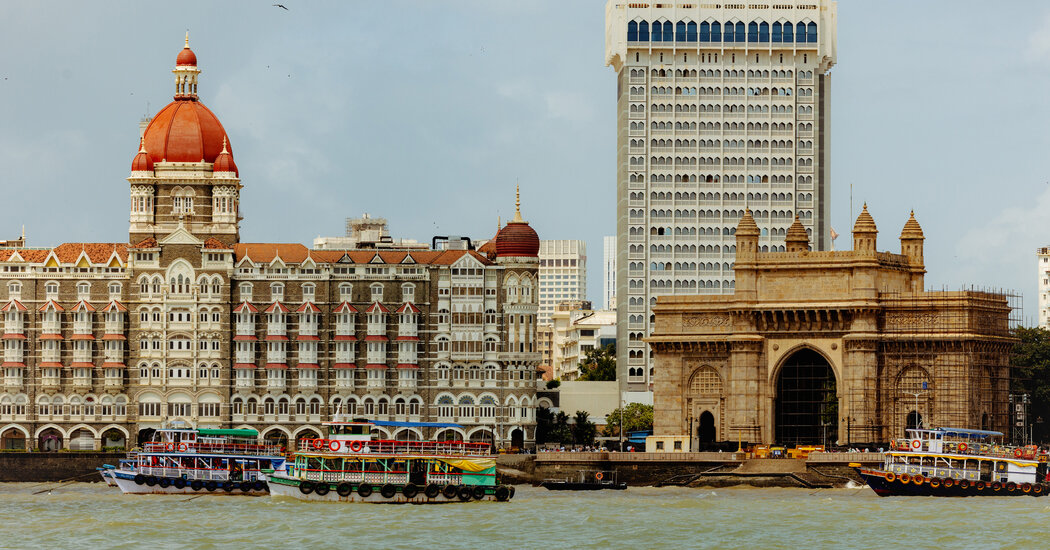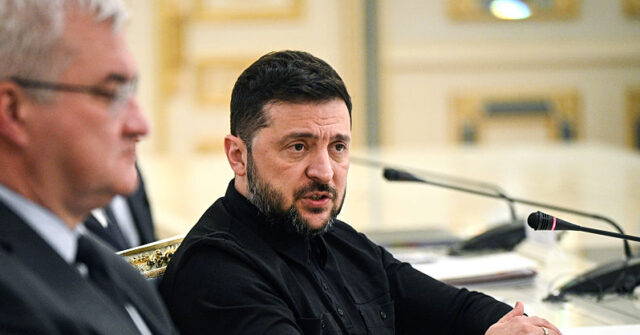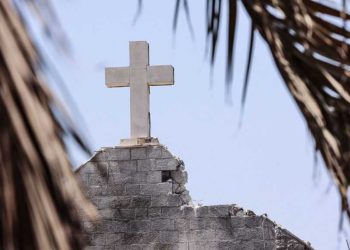Compared to India’s millennia-old cities, Mumbai, which developed into a major trading port in the late 1600s, is still in the midst of a restless, unpredictable adolescence. The 61-square-mile peninsula that now contains Mumbai’s historic core and its 3 million inhabitants was originally a marshy string of seven small islands, occupied first by scattered communities of Koli fishermen and claimed, in turn, by Buddhist, Hindu and Muslim dynasties. Portuguese colonizers took control in the 16th century, establishing a commercial and military settlement they called Bombaim. Then, in 1661, the Portuguese crown included the islands in the marriage dowry of Catherine of Braganza to the English King Charles II. The English anglicized the town’s name to Bombay and, before long, began a campaign to connect the islands with causeways and landfill. The developing port attracted a kaleidoscopic array of ethnic, religious and linguistic groups. By 1947, when India gained its independence, the city — renamed Mumbai in 1995 — had become the commercial capital of what is today the world’s most populous nation.
Despite the brutal sectarian violence that traumatized the city in the early 1990s, and its subsequent rechristening by a nativist political party, Mumbai is still defined, above all, by diversity. The city’s architecture is a flamboyant reflection of that multiculturalism, as seen in the pointed arches and gargoyles of the Chhatrapati Shivaji train station (formerly known as Victoria Terminus), the most famous example of Mumbai’s take on Gothic Revival style; the Municipal Corporation Building across the street, with its Mughal-influenced domes and trefoil arches; and the streamlined crescent of Marine Drive, the graceful backbone of the city’s rich Art Deco heritage.
At the time of India’s last census in 2011 (Covid delayed the 2021 census, which is due to be completed in two years) greater Mumbai had an official population of about 18 million, though that number is estimated to have grown considerably, possibly to as many as 27 million. Exclusive residential towers sprout constantly from the city’s overcrowded soil, mostly driven by profit and speculation rather than thoughtful design or urban impact. But Mumbai’s most distinctive buildings tend to stay closer to the ground, tucked into the city’s quiet interstices. Thus, rather than trying to capture this vast, complex metropolis in its entirety, the list that follows — arranged in no particular order — focuses on Mumbai’s historic south and the buildings that best capture its vibrant cosmopolitan spirit.
1. Elephanta Cave Temples
Elephanta Island is an isolated speck of land in the broad harbor that separates central Mumbai from mainland India. Seven cave temples, the majority likely dating from between the fifth and seventh centuries A.D., were excavated from the island’s basalt hills — five dedicated to the Hindu deity Shiva, and two others, more rudimentary and perhaps dating back as far as the second or third century B.C., were likely used by Buddhist monks. In the most elaborate of the caves, two-dozen monolithic columns support the rough-hewn roof, while the central hall contains extraordinary reliefs, the most famous of which is a towering three-headed bust of Shiva. The Elephanta Caves are a key example of the many rock-cut religious structures scattered across the subcontinent and offer a view into the ancient past of a forward-looking metropolis.
2. Banganga Tank
Across India, communities store water in thousands of baolis, or stepwells: open-air reservoirs, sometimes modest, sometimes elaborately sculpted, accessed via cascades of stairs. One such baoli stands in the heart of Malabar Hill, an elegant residential district at the peninsula’s southwestern tip and one of the oldest continuously inhabited corners of the city. Tradition holds that the Lord Rama, while searching for his kidnapped bride, Sita, with his brother Lakshmana, stopped here to quench his thirst; one of the brothers shot an arrow into the ground, releasing a jet of water from the sacred Bhagwati, a mythic, subterranean tributary of the faraway Ganges. The tank and the Walkeshwar Temple alongside it date back to the 12th century, though both were heavily restored in the early 1700s following their destruction under Portuguese rule. In a city as densely packed as Mumbai, Banganga offers fresh air and a much-needed glimpse of sky — not unlike the recently completed Elevated Nature Trail, designed by IMK Architects, that now winds through a slim band of forest less than a mile to the north.
3. Hasnabad Dargah
Set deep in the tangle of lanes that make up the ethnically and religiously diverse neighborhood of Mazgaon, the Hasnabad Dargah was built between 1881 and 1884 as a mausoleum for the first Aga Khan, the Iranian spiritual leader of the Nizari Ismailis (the largest group within the Ismaili sect of Islam), who’d emigrated to India 40 years before. With its pale blue domes and colonnade of pointed arches, the neo-Mughal Hasnabad mausoleum is not the most famous of the city’s Muslim shrines — that status goes to the Haji Ali Dargah, set on an islet just off Mumbai’s western shoreline, now mostly hidden behind a newly built coastal highway — but it is the most architecturally harmonious, having undergone relatively few major changes since its original construction. Hasnabad remains a particularly refined example of the Islamic revival styles that helped shape the city’s architectural landscape in the late 19th century, a period of enormous economic and demographic transformation.
4. Eros Cinema
Mumbai may have made its fortunes on opium and cotton, but the core of the city’s cultural and economic identity now lies in Bollywood, one of the world’s most prolific film industries. Step through the doors of Churchgate Terminus, the southernmost station on the Western line of Mumbai’s raucous local train network, and one of the first things you’re likely to notice is the ziggurat spire of the Art Deco Eros Cinema: a temple to entertainment, completed in 1938. Though many of the city’s single-screen movie halls have fallen on hard times, losing ground to multiplexes or crumbling in the city’s tropical humidity, Eros reopened to the public last year after a seven-year restoration. And while the project radically altered the original screening area to accommodate an IMAX theater, the building’s spire and luxurious lobby, with its golden sun-shaped ceiling medallion and columns decorated with evocatively stylized bathing scenes, is as beautiful as ever.
5. Oval Maidan
On any given day, young men in cricket whites crowd onto the grassy lawn of Oval Maidan — one of the city’s only public green spaces — to bat and bowl under swaying palm trees, the hipped Mangalore-tiled roofs of the 19th-century High Court, the central seat of the regional judiciary, and the florid Rajabai clock tower at the University of Mumbai. The grassy mall opened directly onto the Arabian Sea until the completion in the 1920s of the Back Bay Reclamation project — an enormous and, at times, controversial landfill initiative that expanded Mumbai’s southern tip by about 440 acres. Now, to the west of Oval Maidan sit a trim row of Art Deco apartment buildings. Though completed under the last decades of British rule, this burst of construction, led by locally trained architects, foreshadowed the city’s push toward self-sufficiency and political independence: an outward-looking vision for a modern republic facing off against the relics of the Raj.
6. Chhatrapati Shivaji Maharaj Vastu Sangrahalaya
Still better known as the Prince of Wales Museum, this gallery, now mainly dedicated to art and archaeology, was built in 1915 and used as a military hospital until 1922. With its load-bearing stone walls of gray basalt and clay-colored trachyte — sturdy English masonry assembled from locally quarried stone — and soaring white dome drawn from examples of 17th-century South Asian Islamic design, the museum remains a landmark of syncretic Indo-Saracenic architecture, colonial India’s dominant turn-of-the-century aesthetic. Just as interesting are the recent interventions by Rahul Mehrotra, one of contemporary Mumbai’s most important architectural thinkers. In 2001, he completed his reconfiguration of the building’s eastern wing with a luminous annex that looks out onto a lawn through vertically louvered windows. A decade later, he added an elliptical steel-and-glass visitor’s center, as weightless and lithe as the original building is stolid and strong. Most recently, in 2019, Mehrotra completed the ethereal Children’s Museum, which wraps around pre-existing trees, with a rare baobab shading an open-air storytelling area.
7. Khotachiwadi
Despite Mumbai’s meteoric growth in the 19th and 20th centuries, there are still, miraculously, a clutch of traditional villages — from Matharpacady in the south to Ranwar and Chuim in the central suburb of Bandra, and Manori at the city’s far northern edge — woven like slubs into the city’s urban fabric. But few are better conserved than Khotachiwadi, a 200-year-old settlement of narrow lanes and quaint villas with tiled roofs and delicately carved wooden balustrades: elements of Indo-Portuguese architecture that persisted in some of the city’s residential buildings until near the end of British rule. In 2022, the gallery 47-A opened on the ground floor of one of these traditional houses, hosting exhibitions of contemporary and historic design and organizing neighborhood events and heritage walks in collaboration with the renowned fashion designer James Ferreira, who was born and raised in Khotachiwadi.
8. Kanchanjunga Apartments
The most significant modern architect raised in Mumbai was Charles Correa, who in the 1970s developed the urban design for Navi Mumbai, a satellite city located east across the harbor. Yet the stand-alone buildings he’s best known for are elsewhere: They’re in New Delhi (the famed British Council), Jaipur (the Jawahar Kala Kendra arts center) and Ahmedabad (the Gandhi Memorial Museum). In Mumbai, he designed single-family homes, low-income housing and a small Catholic church in the neighborhood of Dadar. His most prominent contribution to the city may well be this soaring apartment complex from 1983, which aimed to translate the porous, indoor-outdoor experience offered by traditional bungalows to the imperatives of a late-20th-century metropolis. At Kanchanjunga, that resulted in a puzzlelike tower of duplexes built around double-height terraces cut out of the building’s austere facade, creating an interplay of solids and voids as visually evocative as it is functional. Though casual visitors can’t enter the building, which rises from the wealthy residential district of Cumbala Hill, it’s impossible to miss while headed south along Pedder Road, one of the city’s major thoroughfares.
9. Dadar Parsi Colony
Sometime between the eighth and 10th centuries, a group of Persian Zoroastrians fled religious persecution in Iran and ultimately found their way to the present-day state of Gujarat, where they came to be known as Parsis. In the 17th century, the British encouraged religious tolerance in their newly acquired port, which helped persuade many Parsis to relocate there, establishing private colonies, often called baugs, or gardens, throughout the city. Though nearly all of these are gated, the Dadar Parsi Colony, founded in the 1920s near the leafy, largely South Indian neighborhood of King’s Circle, is an open district of tree-lined streets, gardens and modest apartment buildings, their facades decorated with winged medallions representing the Zoroastrian Faravahar symbol, neo-Classical porticoes and multifoil arches set over narrow verandas.
10. National Center for the Performing Arts
Inaugurated in 1969 and expanded over the years to include galleries, libraries and five theaters, Mumbai’s National Center for the Performing Arts, or NCPA, was built on a plot of landfill reclaimed from the sea near the southern tip of Marine Drive, in the financial district known as Nariman Point. Though its exterior is defined by solid massing and Brutalist severity, the complex’s interiors are vivid and exuberant; they feature Shiavax Chavda’s modish lobby murals of Buddhist mandalas and the Philip Johnson-designed Tata Theater’s semicircular thrust stage, overhung by a tiered and gilded canopy. The building, much like India itself, reflects a combination of distinct cultural influences. (The theater’s canopy, for example, is equally reminiscent of the overhanging branches of a sacred banyan tree and of an elaborately carved column in the Mughal Emperor Akbar’s palace complex at Fatehpur Sikri.) The afterglow of India’s multicultural, post-independence optimism has faded in the decades since the NCPA’s founding, undermined by everything from Prime Minister Indira Gandhi’s summary suspension of civil rights in the late 1970s to the rise of the ethnonationalist Hindu right in the 21st century. Yet buildings like the NCPA — monuments in stone, brick and concrete to India’s as-yet-unfulfilled promise of unity through diversity — still speak to the virulent, joyful, chaotic energy that keeps Mumbai hurtling perpetually into the future.
The post The Top 10 Architectural Sites to See in Mumbai appeared first on New York Times.




